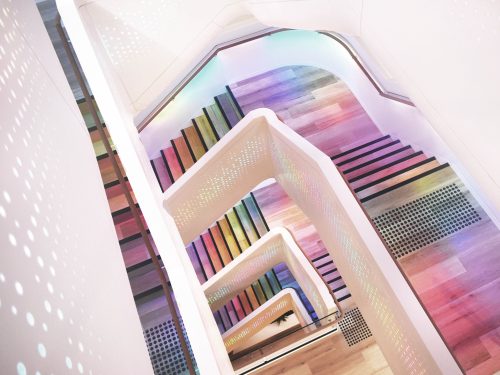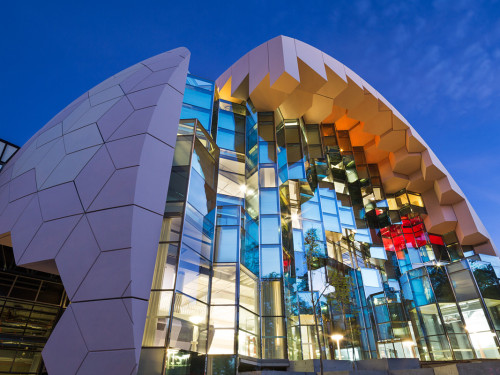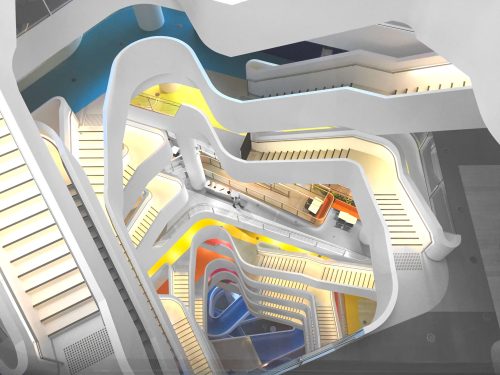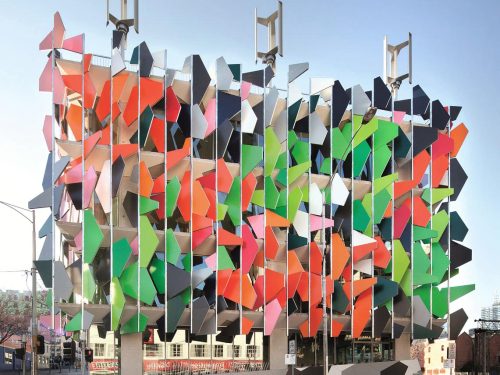Capitol Theatre: Revilitisation
LED Retrofit of RMIT’s Capitol Theatre
Opening in 1924, the Capitol Theatre on Swanson Street is a Melbourne icon for film and live performances alike. Inside, the theatre’s architecture was designed to evoke a crystalline cave, with a spectacular geometric plaster ceiling concealing thousands of coloured incandescent lamps within a complex three-dimensional design.
The Capitol was the first large-scale ‘picture palace’ in Victoria, with over 2000 seats to provide Melbourne with both the latest films. Facing demolition in the early 1960s, the Royal Victorian Institute of Architects and the National Trust of Australia (Victoria) campaigned, with great public support, to ‘Save The Capitol’.
Whilst avoiding demolition, the Capitol Theatre was reduced to 800 seats and the original stalls and street entrance were removed and replaced with the shopping arcade as it is today.
For many years the Capitol Theatre continued to thrive as a home to some of the best arts festivals, including MIFF and the Melbourne Comedy Festival. However, despite constant maintenance from the RMIT team, the building fell into disrepair and was formally closed to the public in 2014.
When the RMIT Capitol Theatre Appeal was launched in November 2017, the theatre was in dire need of substantial restoration works. The appeal was created from a need to revitalise the dilapidated building, including the full restoration of the illuminated ‘cave’ ceiling designed by renowned architects Marion Mahony-Griffin and Walter Burley Griffin.
Having originally been involved in 1999 and 2002 with site tests to try to find an alternate illumination solution for the ceiling, Lightmoves was the obvious choice for the restoration project. From the restoration’s conception, Lightmoves worked closely with GHD Consulting to design a LED lighting concept that was as true to the original design as possible. Lightmoves manufactured RGBW LED Bars in-house for site functional testing; in conjunction with GHD Consultants, Six Degree Architects, Hutchinson’s, and RMIT. Following the successful functional tests, Lightmoves worked hand-in-hand with electrical contractor BN Electrical and builder Hutchinson to develop the design and documentation of the DMX and control philosophy, along with an installation methodology. Once the exhaustive design & documentation process was finalized, the custom in-house manufacturing was completed and the LED Bars were delivered to site for installation, testing, and focussing. Lightmoves technicians skillfully commissioned the DMX control system, including the RGBW LED bars, to meet RMIT’s scope.
The custom RGBW LED bars were no small undertaking. The build comprised of over 770 metres of Lightmoves custom-made RGBW LED bars, made up of 533 custom lengths mounted in custom extrusion. Utilising state of the art LED drivers, the system has over 700 discretely controllable segments.
Part of the restoration project includes a DMX system that integrates seamlessly with the building’s lighting control system. The DMX system is designed in such a way that the ceiling RGBW LEDs can either be controlled from the local touch screens or AV panels for simple DMX pre-set show recall, or be connected to a DMX lighting console for complex interactive live shows.
A Dynalite lighting control system was installed alongside the LED lighting upgrade, designed from the start with ease-of-use and system integration in mind. Using the latest Antumbra user interfaces, the Dynalite system integrates with not only the Pharos system that controls the LED roof lighting, but also with the DALI, relay, and phase-dimmed lighting fixtures throughout the building.
The Pharos control system was designed for education, based around the technical abilities of the RMIT multimedia students and faculty. RMIT’s students have been trained in the system and are able to add new Pharos lighting presets to the roof lighting control system, which can in turn can be synchronised to the audio and digital projection systems.
Both the controllers and the LED bars were proudly manufactured locally by the Lightmoves team in the Noble Park offices. The end result is a solution that is is true to the original lighting design, featuring new state-of-the-art DMX lighting control. This flexible and easy-to-use system will be sure to see the Capitol Theatre through the next 100 years of successful performances.
For further information about the overall Capitol Theatre project, and the history behind the theatre, see the ArchitectureAU’s article at https://architectureau.com/articles/griffins-capitol-theatre-restored-reopened/.






